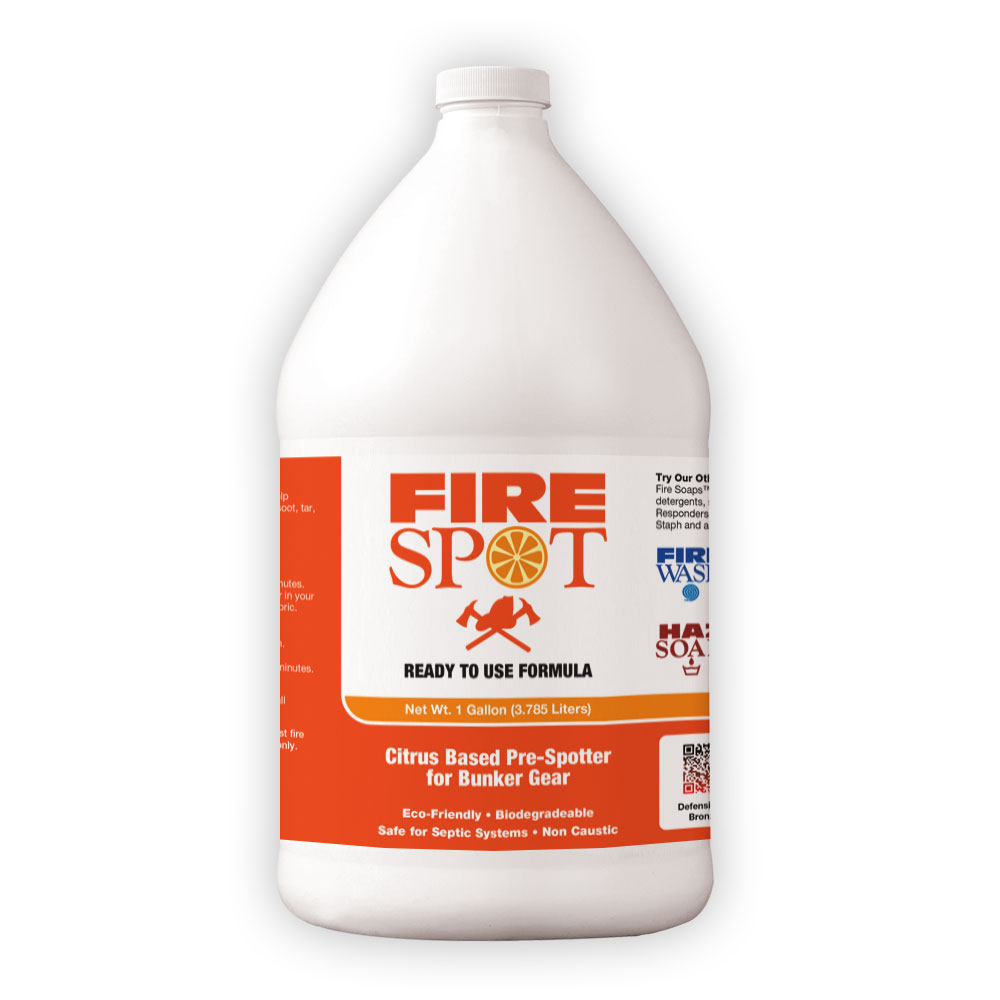Firefighters put their lives on the line every day to protect communities and ensure public safety. Personal protective equipment (PPE) plays a critical role in ensuring their safety and well-being during firefighting operations. However, PPE gear can become compromised and contaminated with various hazardous substances, such as smoke, soot, toxic chemicals, and heavy metals. This can pose serious health risks to firefighters if not properly cleaned and decontaminated. That’s where PPE gear soap comes in.
Understanding the Importance of PPE Gear Soap
The Role of PPE in Firefighting
Firefighters are exposed to numerous dangerous elements and contaminants in the line of duty. These harmful substances can accumulate on their PPE, compromising its protective properties and putting their health at risk. Proper cleaning techniques and specially formulated PPE gear soap are essential for effectively removing these contaminants and maintaining the integrity of the gear.
NFPA 1851 Standards
The National Fire Protection Association (NFPA) has established guidelines for the selection, care, and maintenance of protective ensembles for structural firefighting in NFPA 1851. This standard emphasizes the need for proper detergents that are safe for both the gear and the firefighters. Adhering to these standards ensures that PPE gear is adequately cleaned and decontaminated.
Key Features of PPE Gear Soap
When choosing the right PPE gear soap for your firefighting equipment, there are several key features to consider:
Safe and Effective Cleaning
PPE gear soaps are specifically designed to provide thorough cleaning of heavily soiled turnout gear while being gentle enough for everyday use. These soaps are non-corrosive to metals and have a neutral pH level, ensuring that they will not damage the gear or harm the wearer.
No Residue or Harsh Solvents
Quality PPE gear soaps leave no residue on the gear, ensuring that it remains clean and fully functional. Additionally, these soaps do not contain harsh solvents, such as D-limonene, which can be harmful to both the gear and the firefighter.
Compatibility with Various Cleaning Methods
PPE gear soap can be used in all cleaning applications, including machine washing and hand washing. This versatility makes it an excellent choice for fire departments and other organizations that need to regularly clean and maintain their PPE.
Popular PPE Gear Soap Brands
Several reputable brands offer PPE gear soaps that are widely used and trusted in the firefighting industry. Here are a few popular options:
FIRE SPOT Gear Soap
FIRE SPOT is a specially formulated citrus-based pre-spot treatment for all bunker gear outer shells, thermal liners, EMS gear, and station wear. It is designed to effectively remove toxins, hydrocarbons, and other contaminants from personal protective ensembles.
SureClean™ Plus Gear Soap
SureClean™ Plus is a concentrated, ready-to-use liquid fabric sanitizer that continually eliminates 99.9% of infectious bacteria. This gear soap provides an extra layer of protection by sanitizing the turnout gear and ensuring it remains free from harmful bacteria.
Fire Wash™ Liquid and Fire Wash™ Solid Gear Soaps
Fire Wash™ Liquid and Fire Wash™ Solid are highly effective gear soaps that provide safe and thorough cleaning of heavily soiled turnout gear. These soaps are designed to remove smoke odors, soot, and other contaminants while preserving the integrity of the gear.
Fire Spot Citrus Based Prespotter
The Fire Spot Citrus Based Prespotter is a powerful pre-spot treatment that helps break down tough stains and contaminants on turnout gear. It is specially formulated to target specific areas of heavy soiling, ensuring a thorough cleaning process.
Proper Cleaning Techniques for PPE Gear
To ensure the effective cleaning and decontamination of firefighter turnout gear, it is important to follow proper cleaning techniques. Here are some guidelines to consider:
Gross Decontamination on the Fireground
Conducting on-scene gross decontamination can significantly reduce the amount of carcinogens firefighters absorb during their ride back to the firehouse. This can be done using a bucket, mild dish soap, a soft brush, and water. Removing and bagging PPE on the scene further reduces the risk of contaminating the rig’s cab and the firefighters inside.
Inspection and Damage Assessment
After returning to the station, wear EMS exam gloves to inspect and separate the PPE. This helps protect the firefighter from the contaminated gear. Check for any damage, such as tears, holes, or seam separations. Repairs should be done by reputable repair shops specializing in firefighter PPE.
Pre-Wash Treatment for Heavily Soiled Gear
Some heavily soiled gear may require pre-wash treatment. This can be done with a pre-wash cycle in the machine, spot treating with a cleaner, or both. Adding an extra rinse cycle can help remove stubborn stains. It is important to use cleaning agents and detergents specifically designed for firefighter PPE.
Washing and Drying
Follow the manufacturer’s instructions for cleaning, as well as the guidelines outlined in NFPA 1851. Separate the liners from the shells, turn the liners inside out, and wash shells with shells and liners with liners. For gloves, hand washing is recommended. It is crucial to use fire service-specific washer/extractors designed for turnout gear, as household machines are not suitable.
Conclusion
Properly cleaning and decontaminating firefighter turnout gear is essential for maintaining the safety and well-being of firefighters. Using specially formulated PPE gear soaps, following proper cleaning techniques, and adhering to NFPA 1851 standards are crucial steps in ensuring that the gear remains clean, functional, and protective. By prioritizing the cleanliness of PPE, firefighters can reduce their exposure to hazardous substances and minimize the associated health risks. Choose trusted brands and products that meet industry standards to effectively clean and maintain your PPE gear. Stay safe, stay protected.








